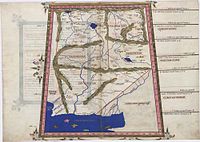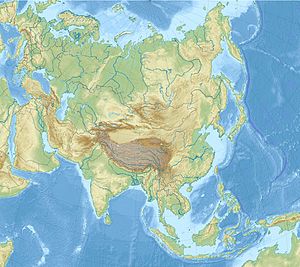Herat
This article may require cleanup to meet Wikipedia's quality standards. The specific problem is: Overload of images in non-relevant sections. (July 2021) |
Herat
هرات | |
|---|---|
From top: Great Mosque of Herat, Shrine of Khwaja Abd Allah, Mirwais Sadiq Khan Tomb, View of Gawhar Shad Mausoleum | |
 Flag | |
| Nickname(s): The Pearl of Khorasan[2] | |
 Herat Location in Afghanistan | |
| Coordinates: 34°20′31″N 62°12′11″E / 34.34194°N 62.20306°ECoordinates: 34°20′31″N 62°12′11″E / 34.34194°N 62.20306°E | |
| Country | |
| Province | Herat |
| Area | |
| • Total | 182 km2 (70 sq mi) |
| [1] | |
| Elevation | 920 m (3,020 ft) |
| Population | |
| • Estimate (2021) | 592,902[3] |
| Time zone | UTC+4:30 (Afghanistan Standard Time) |
| Control | |
Herāt (/hɛˈrɑːt/;[4] Dari/Pashto: هرات) is an oasis city and the third-largest city of Afghanistan.[5] In 2020, it had an estimated population of 574,276, and serves as the capital of Herat Province, situated in the fertile valley of the Hari River in the western part of the country. An ancient civilization on the Silk Road between the Middle East, Central and South Asia,[6] it serves as a regional hub in the country's west, and its historic Persian influences has given it the nickname as Afghanistan's Little Iran.[7]
Herat dates back to Avestan times and was traditionally known for its wine. The city has a number of historic sites, including the Herat Citadel and the Musalla Complex. During the Middle Ages Herat became one of the important cities of Khorasan, as it was known as the Pearl of Khorasan.[8] After the conquest of Tamerlane, the city became an important center of intellectual and artistic life in the Islamic world.[9] Under the rule of Shah Rukh the city served as the focal point of the Timurid Renaissance, whose glory matched Florence of the Italian Renaissance as the center of a cultural rebirth.[10][11] After the fall of the Timurid Empire, Herat has been governed by various Afghan rulers since the early 18th century.[12] In 1717, the city was invaded by the Hotaki forces until they were expelled by the Afsharids in 1729. After Nader Shah's death and Ahmad Shah Durrani's rise to power in 1747, Herat became part of Afghanistan.[12] It witnessed some political disturbances and military invasions during the early half of the 19th century but the 1857 Treaty of Paris ended hostilities of the Anglo-Persian War.[13]
The roads from Herat to Iran (through the border town of Islam Qala) and Turkmenistan (through the border town of Torghundi) are still strategically important. As the gateway to Iran, it collects high amount of customs revenue for Afghanistan.[14] It also has an international airport. Since the 2001 war the city had been relatively safe while the rest of Afghanistan suffered from Taliban attacks.[15] In 2021, it was announced that Herat would be listed as a UNESCO World Heritage Site.[16]
On 12 August 2021, the city was seized by Taliban fighters, becoming the eleventh provincial capital to be captured by Taliban as part of the wider 2021 Taliban offensive.[17]
History[]

Herat is first recorded in ancient times, but its precise date of foundation is unknown. Under the Persian Achaemenid Empire (550–330 BC), the surrounding district was known by the Old Persian name of Haraiva (






